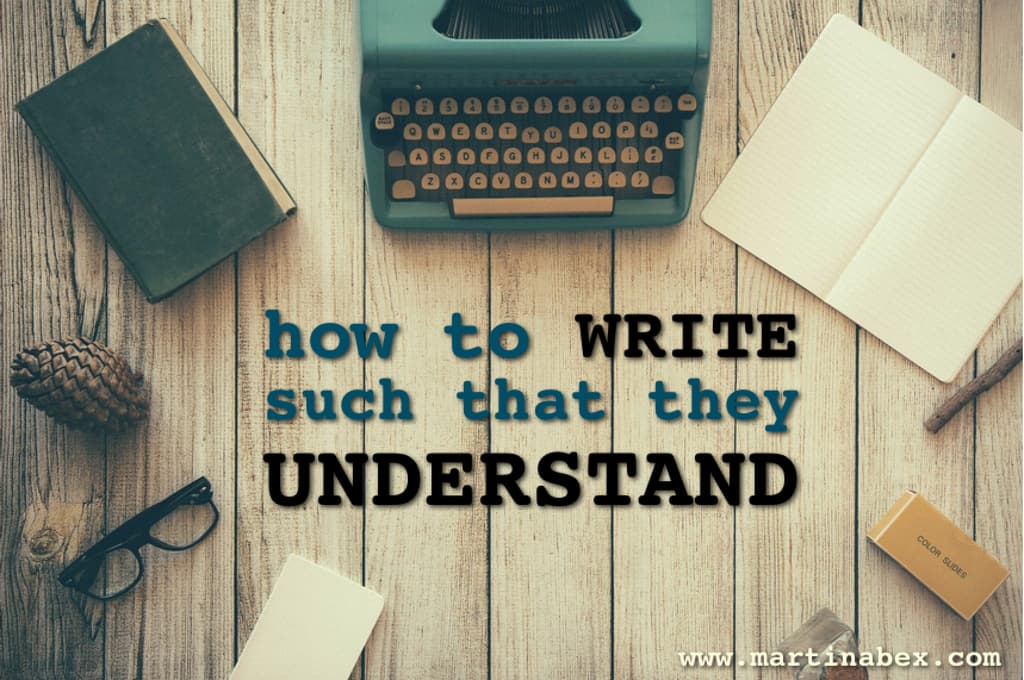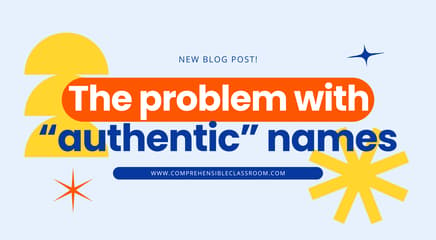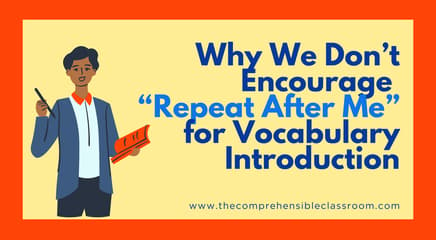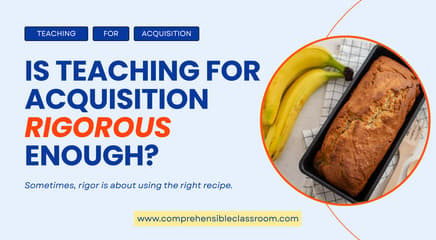Once I moved away from using the textbook as the center of my curriculum, I was free to bring in all kinds of new texts. Popular songs, novels written for language learners, picture books, short non-fiction readings prepared by me, infographics, edited stories written by my students or co-created by the class, and more. By reading many texts from the very beginning of Spanish 1, I discovered that my students never felt intimidated by reading in the target language. With reading and listening as the focal point of my instruction, my students were able to explore and enjoy the stories that we shared, whether real or imagined.
As you, too, step away from the textbook and the comfort of the activity types that you have seen since you took your first language class—you know; conjugate the verb in parentheses, complete the dialogue, define the word—you will quickly find that there is a richness to the instruction that comes with stories. And when I say “stories” in this post, I mean in the broadest sense: the stories we create, the stories of real people (like the 35 sitting in front of you right now!) and events, the stories that tell the history, challenges, and victories of the cultures we are studying. I am confident that as you continue on your journey away from practice, practice, practice, you will find and appreciate the same richness that I have seen.
Part of your journey toward a stories-based curriculum will require you to learn how to write texts that your students understand. You will need to learn how to create original texts and adapt existing texts that are comprehended by your students. One reason for this is that there are simply not yet enough very, very easy to read language learner texts out there. The demand is high! Another reason is that you will need to write stories that are unique to your classes. If you are doing Special Person interviews, you will likely write summaries of the interviews afterward. If you are doing storyasking or One Word Images (OWIs), you will need to write the story that you created with your students. To that end, I would like to share with you some strategies that will help you write texts that your students will understand.

STRATEGY 1: Shelter Vocabulary (and don’t shelter grammar)
Susan Gross said it best: SHELTER VOCABULARY. What does that mean?? Protect your students from an onslaught of unfamiliar words that will overwhelm them and undermine both their comprehension and their confidence. Use words that your students already understand, use cognates that they can recognize with ease, use proper nouns whenever possible instead of generic nouns, use few new words (and consider establishing their meaning by including a footnoted translation). The number of unfamiliar words should be very, very low—even if you provide translations.
When talking about sheltering vocabulary, it is very important to stress that we NOT shelter grammar. What does that mean?? Do NOT use incorrect or unnatural grammar in the interest of protecting your students from unfamiliar grammatical constructions. I thought about this earlier today as I was reading a publication for language learners that came in the mail. There was a reading about the history of a famous landmark, and in recounting the history, the author used present tense! As in, “They build it in 2000. Many people die while building it.” If you are talking about something that happened in the past, use the past tense—even if your students have not seen it before! DON’T shelter grammar! (See Correcaca for evidence--you'll find hace caca, hizo caca, ha hecho caca, no hagas caca, and haz caca in this simple Level 1 story!) You will soon find that students typically understand it without an explanation.
STRATEGY 2: Park on key pieces of information
One of our family’s favorite children’s books is Moose in the Garden by Nancy White Carlstrom. It was given to me when I was pregnant with my first child, and we have read it over and over and over. It is no longer in print, but thanks to the good old Internet I was able to connect with the author via email, and she gave me permission to share the book on this blog!
Every time that I read the book, I think about how it is a great example of writing to be comprehended. Here are some “parking” strategies that Nancy uses in the book that help the reader to understand it better.
“Rewind” before adding new information
Say a simple sentence. Repeat the simple sentence with a new detail. Repeat the simple sentence, the new detail, and even more new information.
“These are the plants that grow in our garden. These are the plants that grow in our garden, warmed by the sun. These are the plants that grow in our garden, warmed by the sun, watered by the rain.”
Say an old piece of information in a new way
These are the plants that grow in our garden […] The plants grow and grow and grow
Repeat a pattern
"Oh no!” says my mother, who looks out the window. “Oh, go!” says my father, who looks out the door. […] “Oh, go!” says my mother, who runs from the window. “Oh, no!” says my father who runs out the door.

Another example of a text that is structured well to maximize comprehension is the story Sophia est très curieuse that Alice Ayel co-created with one of her students in a language class. (Alice is a wonderful resource for French learners and teachers of all languages—here is her website, here is her YouTube channel, and here is her TpT store!).
Let’s look at this selection from the first paragraph of the story:
Sophia est française. Elle est allemande aussi. Sophia a la double nationalité, elle est française et allemande, elle est franco-allemande. Sophia est franco-allemande mais elle n’habite pas en France et elle n’habite pas en Allemagne non plus1. Sophia habite en Suisse. Elle n’habite pas en Suisse allemande. Elle habite en Suisse française.
In English, it says, “Sophia is French. She is German too. Sophia has dual citizenship, she is French and German, she is Franco-German. Sophia is Franco-German but she doesn’t live in France and she doesn’t live in Germany either. She lives in Switzerland. She doesn’t live in German Switzerland. She lives in French Switzerland.”
Imagine the alternative: “Sophia a la double nationalité. Elle est franco-allemande et elle habite en Suisse française.” (“Sophia has dual citizenship. She is Franco-German and she lives in French Switzerland.”)
While this “talking around” or “parking” on one piece of information is the opposite of the concise form of writing that we strive for in our first language, it is extremely beneficial to beginning language learners! As I was reading Alice’s story, the drip-drip-drip of her repetition allowed me to process the information. It is easier to get stuck at word-level comprehension when we are walking that i + 1 tightrope—that point at which we comprehend a text but we are being pushed just a little beyond comprehending it “with ease”. That’s where I, as a learner, find myself understanding words and phrases but not remembering things that I read 10, 20, or 30 seconds before. Repeating the information allows me to continue reading without stopping and going back to re-read (which feels very frustrating); the re-reading is built into the text. This information parking also allows the use of rich language. We find more conjunctions, beautiful examples of negation, and we can interpret synonyms from context; without the use of translations. All of these things help me to feel confident while reading a new text and EXCITED afterward at the length and complexity of the story that I just read!
A third example is from Mira Canion’s novel “El escape cubano”. This novel is just 28 pages long, and a lot happens in those 28 pages! (Think ending of Mockingjay when Finnick dies and you read the next three paragraphs and you are like, “Wait, did they seriously just kill off Finnick?” and you have to put down the book for a moment because the text is pressing on and you aren’t ready just yet!). In Chapter 2, before the action starts getting crazy, we find this little gem of a comprehensible paragraph:
“[...]Pero Gloria no me presta mucha atención. No soy guapo. Las chicas les prestan atención a los chicos guapos. Ella tiene 14 años y yo tengo 13. Las chicas de 14 años no les prestan atención a los chicos de 13 años.”
In English, “But Gloria doesn’t pay much attention to me. I am not handsome. Girls pay attention to the handsome guys. She is 14 and I am 13. 14 year old girls don’t pay attention to 13 year old boys.”
We see here again this repetition of information; chopping and twisting it in order to read it again in a new way, or to read new information in a familiar way. In L1 it seems bulky, but when a reader is faced with new information AND a new language, it feels comfortable. And believe it or not—comfortable is what we want! Feeling comfortable is a sign that our affective filter is down, which means that we are well-poised to acquire language.
There are ever more texts out there for beginning language learners, and the demand continues to increase as more teachers step into this stories-based, texts-rich way of teaching. I encourage you to find some simple texts in a language that you don’t already know and start reading (or listening!). Reflect on the strategies used by the author that help you to understand the text, and reflect on when your comprehension broke down and what the author could have done to support it.




